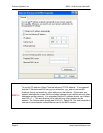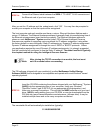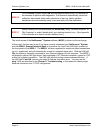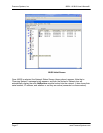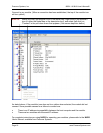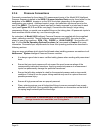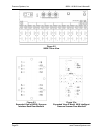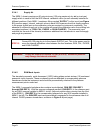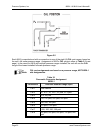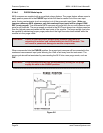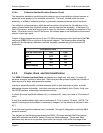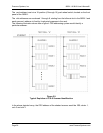
Pressure Systems, Inc. 98RK-1 & 9816 User’s Manual©
Page 21 www.PressureSystems.com
2.3.4.1 Supply Air
The 98RK-1 chassis requires an 80 psig minimum (125 psig maximum) dry air (or inert gas)
supply which is used to shift the 9816 internal calibration valve (in each scanner) between its
different positions. Each 98RK-1 contains a fitting marked “SUPPLY” for this input (see Figure
2.2, previous page). Internal solenoid valves in each 9816 scanner direct this supply pressure
to the proper control port on the calibration valve as required by instrument commands. The
absence of sufficient supply air to the module will prevent the calibration valve from shifting into
requested positions (i.e., RUN, CAL, PURGE, or LEAK-CHARGE). The pneumatic input
manifold (on the rear of the chassis) contains an additional two transducers to read the supply
and purge air pressures.
STEP 19
Connect 80-125 psig dry air to the chassis SUPPLY port. This is the power used to
move the internal calibration valve between the four locations; RUN, CAL, PURGE,
and LEAK-CHARGE.
2.3.4.2 RUN Mode Inputs
The standard pneumatic quick disconnect ( QDC) tubing plates contain sixteen (16) numbered
pneumatic input channels. These numbered inputs are attached to corresponding pressure
transducers inside the instrument and should be pneumatically attached to the pressure
measurement points under test.
The 98RK-1 pneumatic backplane also contains inputs labeled RUN REF (RUN REF 1
through RUN REF 8). With the common reference manifold, RUN REF 1 is the reference port
for any 9816 scanner installed in 98RK-1 slot #1 (leftmost position when viewing from the front
of the 98RK-1). RUN REF 8 is the corresponding reference for any 9816 scanner installed in
98RK-1 slot #8. The RUN REF inputs are pneumatically connected to the reference side of all
internal DH200 pressure transducers, as shown in Figure 2.4 (next page).
WARNING: Supply air should not exceed 125 psi (875 kPa). Excessive pressure
may damage the internal solenoids.




